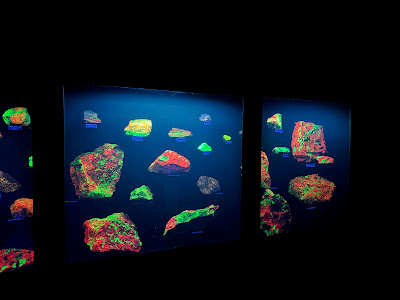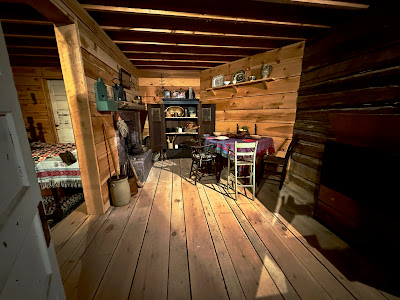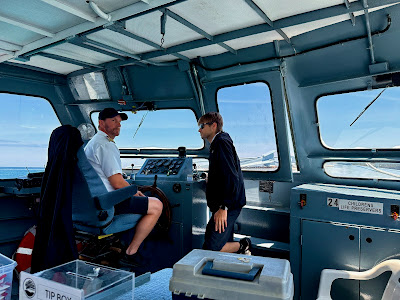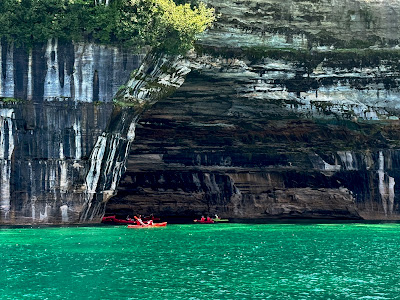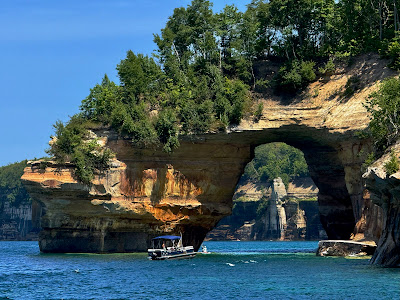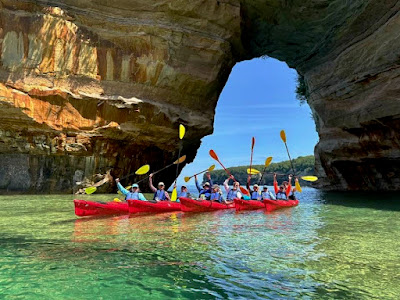We went tubing with Rivers Edge Adventure Company—a true summer tradition in the Northwoods. This relaxing three-hour float down the scenic Manitowish River is the perfect way to unwind. Hop in at Rivers Edge, and they’ll pick you up downstream when your journey ends. You return to civilization feeling refreshed. They even have tubes for your cooler—now that’s floating in style.
"A good traveler has no fixed plans, and is not intent on arriving." ~ Lao Tzu
7.28.2025
Tubing the Manitowish
7.27.2025
Seaman Mineral Museum
I enjoyed visiting the A.E. Seaman Mineral Museum—one of North America’s premier mineral museums. Nationally and internationally recognized by collectors and connoisseurs, it features the largest public exhibit of Great Lakes minerals and the world’s finest collection of Michigan specimens. The museum’s exhibits showcase the rich colors and stunning beauty of nature’s masterpieces.
Just a few of the many beautiful minerals on display—each one a natural masterpiece showcasing vivid colors, intricate crystal structures, and the geological wonders of our planet.
7.18.2025
Marquette Michigan
Marquette, Michigan, is a vibrant city on the southern shore of Lake Superior in the Upper Peninsula. Known for its natural beauty, Marquette features rugged cliffs, scenic trails, and a bustling harbor. It's home to Northern Michigan University and rich in history, once serving as a key port for shipping iron ore. Outdoor enthusiasts enjoy year-round activities like hiking, biking, skiing, and kayaking, all set against the backdrop of stunning lake views and dense forests.
The Marquette Regional History Center showcases the rich heritage of Michigan’s Upper Peninsula through exhibits on Native culture, mining, logging, and local life.
George Shiras III (1859–1942) is widely considered the father of modern wildlife photography for his groundbreaking innovations in flash photography and remote camera trapping. He pioneered the use of remote-triggered camera traps, where animals would trip a wire that activated a magnesium flash and camera shutter—capturing dramatic, candid images of deer, owls, raccoons, and other nocturnal creatures. These hauntingly beautiful nighttime photographs, many taken in Michigan’s Upper Peninsula, revolutionized the way wildlife was documented and helped lay the foundation for modern conservation photography.
7.15.2025
Pictured Rocks
We took the classic boat trip to see Pictured Rocks, a stunning 42-mile stretch along Lake Superior. The towering sandstone cliffs, ranging from 50 to 200 feet high, are streaked with vibrant mineral colors—reds, blues, greens, and blacks—creating a breathtaking natural tapestry. The boat offered a perfect view of the dramatic rock formations, hidden caves, and cascading waterfalls that make this shoreline truly unforgettable.
This tree has become isolated over time on a rocky pillar, yet it continues to survive
because it's roots extend across the gap to reach fertile soil on the nearby bank.























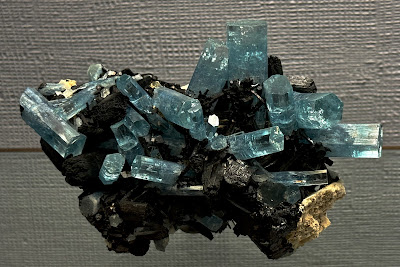


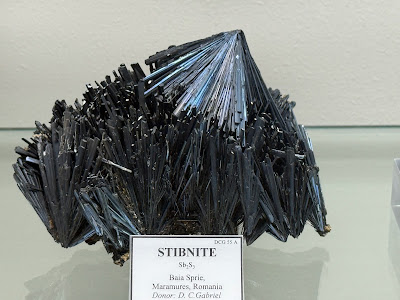


.jpeg)

